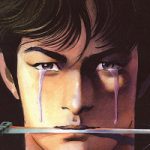El Eternauta
Regions: Argentina

El Eternauta (The Eternaut) is the protagonist of the series of the same name created by the Argentine writer Héctor Germán Oesterheld (1919-1978?). This work is unanimously considered to be the best Argentine comic of all time.
The first story of El Eternauta was published in weekly installments in Hora Cero magazine between September of 1957 and September of 1959. Its artist was the Argentinian Francisco Solano López (1928-2001), with whom Oesterheld had already collaborated on other occasions. This first story, of over 350 pages, is the best known of the many featuring this time-traveler.
Juan Salvo, better known as the Eternaut, is a human from the future who searches tirelessly through time for his wife, Elena, and his daughter, Martita. As the comic begins, the Eternaut materializes in the home of a comic book writer, Germán, the alter ego of Oesterheld. Throughout that night, the visitor describes the deadly snowfall that began the extraterrestrial invasion which would eventually separate him from his family.
El Eternauta is based on a classic plot premise of science fiction: an alien invasion. What gives originality to the story is its realism. In this case, the aliens attack Buenos Aires. Because of this, many of the story’s settings are very recognizable places in the city. In this way, the narrative links every-day and fantastic elements.
The enemies of the humans are Them. Invisible, they embody cosmic hatred, absolute evil. In order to invade Earth, they rely on the help of the Beetles, the Gurbos, and the Hands. Different than the others, the Hands are not radio-controlled beings. They are alien intelligences from another planet destroyed by Them. They obey their captors because they have been grafted with the terror gland, which kills them if they feel fear, hence their inability for disobedience.
Oesterheld himself noted the lack of a single hero in this first story of El Eternauta. The resistance of the extraterrestrials is made up of everything from intellectuals, like the university professor Favalli, to laborers or military personnel. In this way, the hero of this story is the collective. This proves commensurate with the class alliance movement which was proposed at the time in Argentina.
A second version of this same story was published in Gente magazine beginning in May of 1969. At that time, the Uruguayan Alberto Breccia (1919-1993) illustrated Oesterheld’s new draft, notably political in nature. Unlike the 1957 version, the major powers do not support Buenos Aires in this one, rather they allied themselves to the aliens and surrender Latin America to the invaders. Regrettably, neither this plot twist nor Breccia’s avant-garde style were palatable to the magazine’s conservative-minded readers. Consequently, the authors had to finish the story prematurely. Only 50 pages were published.
The success of the 1957 version, re-edited on two occasions between 1962 and 1975, together with Oesterheld’s personal attention were instrumental for El Eternauta II seeing the light of day. This second part, also with illustrations by Solano López, was published in Skorpio magazine from December of 1976, at the height of the dictatorship of the Argentine Military Junta. The story, 204 pages, occurs in the 23rd century, in a post-apocalyptic Argentina to which Germán is transported. He will there encounter Juan Salvo, along with his family and the members of the village of Las Cuavas, threatened by Them.
There are notable differences in this second part. The story is filled with Oesterheld’s revolutionary morale and political commitment. This is reflected in the character of the Eternaut, closer to a superhero than to a human. The collective hero of the first part gives way to the figure of the leader with superhuman powers embodied by Juan Salvo. Cold and calculating, he doesn’t hesitate to sacrifice human lives if the ultimate end, the liberation of the village of Las Cuevas, justifies it.
Following the kidnapping, confinement, and disappearance of Oesterheld in 1977, new installments of the series were published. Despite the fact that the majority of these included López Solano on pencils, none of them achieved the quality of the first two.
— José Enrique Navarro
See also: Héctor Germán Oesterheld; Mort Cinder
Further Reading
- Accorsi, Andrés. 2001. “Argentine Comics.” International Journal of Comic Art 3.2: 23-43.
- Fiore, Daniela, director. Imaginadores. DVD. Buenos Aires, Argentina: SBP. 2008. In Spanish with English, French and Italian subtitles.
- Merino, Ana. 2001. “Oesterheld, the Literary Voice of Argentine Comics.” International Journal of Comic Art 3.2: 56-69.
- Oesterheld, Germán Héctor and Francisco Solano López. The Eternaut. Fantagraphics, 2015.
- Pilcher, Tim and Brad Brooks. “Argentina. ” In The Essential Guide to World Comics, 201-222. London: Collins and Brown. 2005.
- Reati, Fernando. “Argentina’s Montoneros: Comics, Cartoons and Images of Political Propaganda in the Underground Guerrilla Press of the 1970s.” In Redrawing the Nation. National Identity in Latin/o Comics, edited by Héctor Fernández L’Hoeste and Juan Poblete, 97-110. New York: Palgrave MacMillan, 2009.


